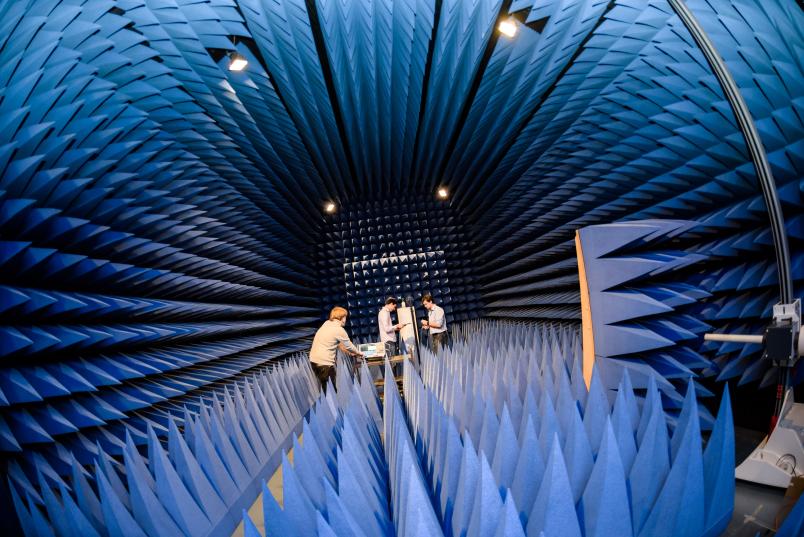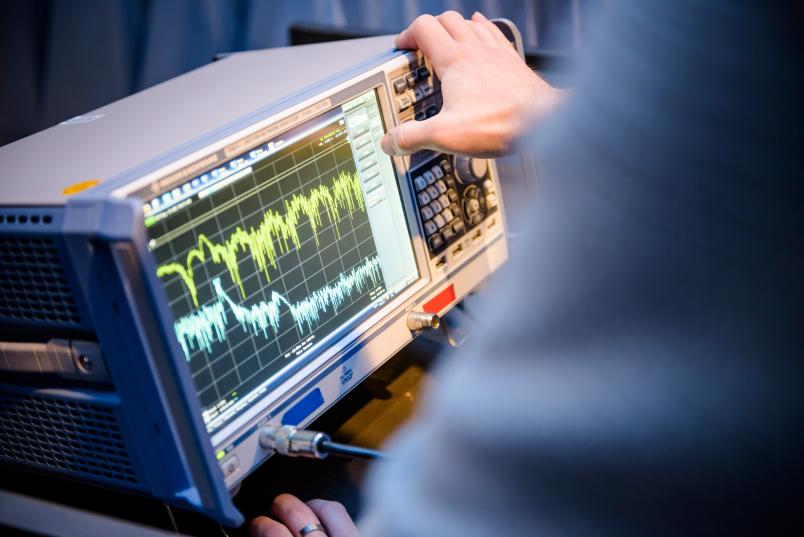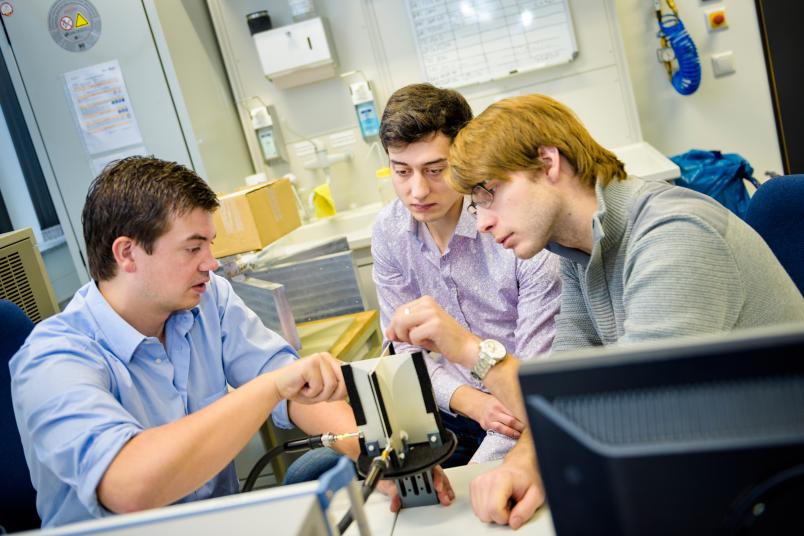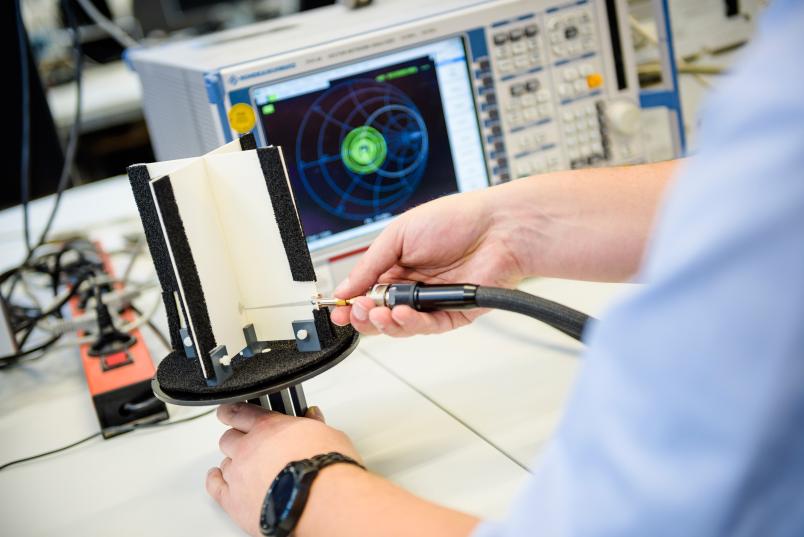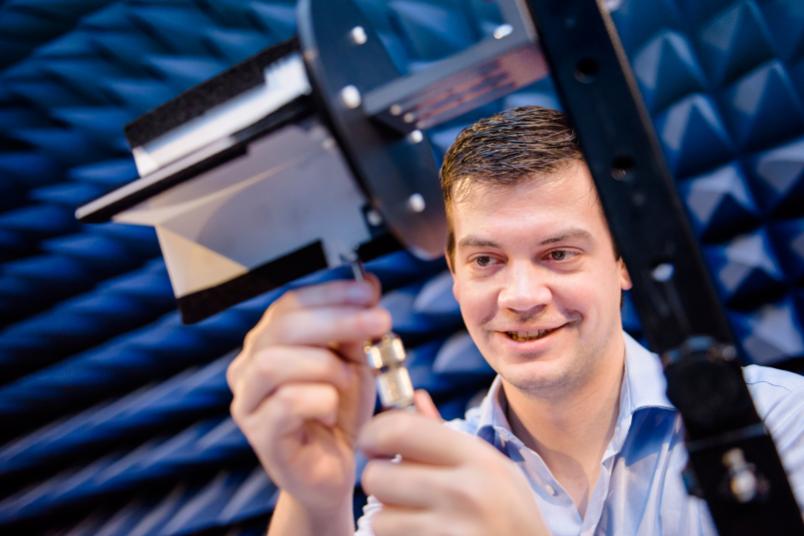
Colombia
New technology for landmine detection
In Colombia, large areas are teeming with mines. Finding them with traditional technologies is as good as impossible.
The ground is covered in leaves, stones and roots; the tall trees cast a pattern of light and shadows on the path that leads through mountainous terrain. At first glance, the Colombian jungle looks idyllic. But appearances can be deceiving. Even though Colombia has not experienced any military conflicts, many areas are teeming with land mines which had been laid by guerrilla forces and members of drug cartels.
During a visit to mine detection training grounds in Colombia, RUB engineers Dr Christoph Baer and Jan Barowski had the chance to experience first-hand how treacherously the traps are hidden.
Numerous mines from guerrillas and drug cartels
More than 9,000 Colombians had fallen victim to landmines between 2000 and 2012. According to conservative estimates, another 200,000 booby traps still exist in the country. In the recent year, the Colombian government and the FARC guerrilla force agreed to conduct comprehensive mine clearance. But how is it supposed to work in practice?
The mines laid in Colombia had not been industrially manufactured. The correct term is improvised explosive devices. The guerrilla fighters put them together from everyday items that happened to be at hand. “That is a problem for detection,” says Christoph Baer from the Institute of Electronic Circuits, which is headed by Prof Dr Thomas Musch. “Acting according to the principle ‘If I find one of them, I’ll find them all’ is not productive at all.”
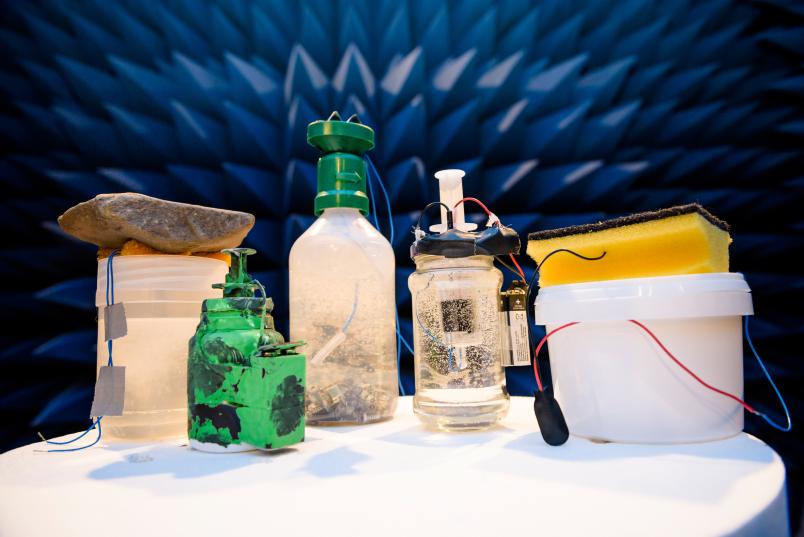
Together with colleagues from Technical University Ilmenau and with their Colombian partners, the engineers from Bochum are developing a new detection method, in order to optimise humanitarian mine clearance in Colombia. At RUB, Christoph Baer pursues this objective in collaboration with Jan Barowski and Jochen Jebramcik from the Institute of Microwave Systems, where the chair is held by Prof Dr Ilona Rolfes.
Currently, the Colombian military is searching for mines using metal detectors. But due to the low metal content in those mines, the detectors have to be extremely sensitive, and, consequently, they locate all kind of items. “Only one in 2,000 found objects is a mine,” explains Christoph Baer. This renders the search extremely difficult. The team wishes to redress the problem by introducing sophisticated radar technology.
Goal: handheld-device for mine detection
They are aiming at developing a handheld device that will detect different mine types on rough terrain without fail and that can be carried as easily as a metal detector. “However, we won’t achieve this goal by the end of the current funding period,” says Baer.
The German Research Foundation is financing the project “Humanitarian Microwave Detection of Improvised Explosive Devices in Colombia”, short Medici, for the duration of 24 months. In order to realise a prototype, the researchers estimate they will require an additional two to three years.
In the current funding phase, they intend to provide the technological basis for the design of a handheld device. The Medici team focuses on Ground Penetrating Radar, a technology that is also used by archaeologists. However, conventional systems are unsuitable for their purposes.
Ground radar as measuring technique
The measurement system is basically made up of three principal components: an antenna, a radar detector, and a positioning system. The radar contains electronic measurement technology that generates signals, and, later, records and analyses them. The antenna transmits the signals generated by the radar. They are reflected at objects in the ground and, subsequently, are received by the antenna. An additional positioning system monitors continuously in which position the measurement device is located in relation to the ground.
Even though antennae operating at the required frequency range of 500 megahertz to 4 gigahertz are available in the market, many of them are big and heavy and therefore unsuitable for handheld devices.
This is why the RUB researchers constructed their own model, incorporating as few metal elements as possible. One advantage of the system is weight reduction, but it offers yet another benefit: the plastic surface reflects the signals sent back from the ground to a significantly lesser extent than a metal surface. Systematic measurement errors can thus be avoided.
The radar system was optimised by the project partners at the Technical University Ilmenau. The engineers utilised the technology developed at RUB for positioning. In addition to hardware, algorithms are crucial for signal processing. They must be able to identify which objects in the ground are mines and which are not.

We have built ourselves mines from objects of everyday life.
Christoph Baer
“We knew that we needed test objects,” points out Baer. “Therefore, we assembled mines from everyday items.” Not with real explosives, of course, but with empty detonators.
Mines generate characteristic radar signals
Subsequently, the researchers created computer models of the real mines and simulated the radar signals that would be generated by each mine, the so-called radar cross section. They searched the models for elements that are characteristic for mines, but not for objects such as stones or screws.
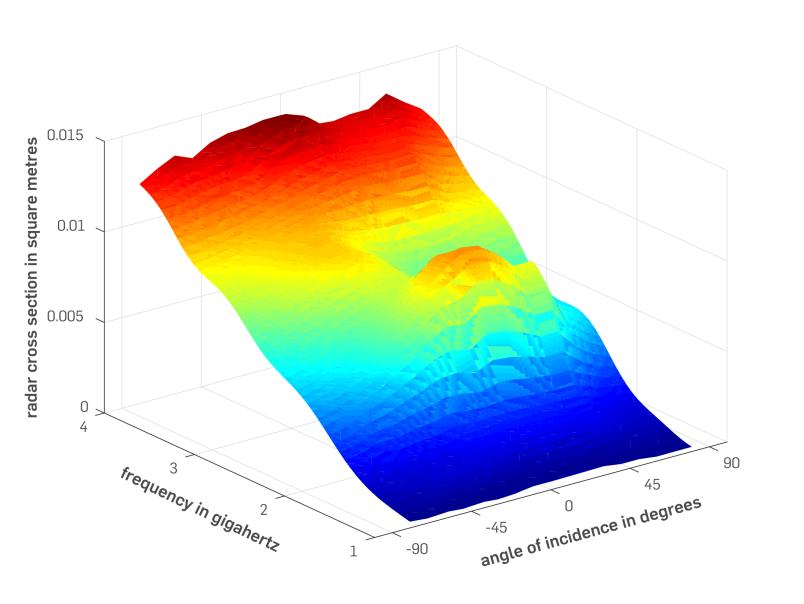
The metal detonator strongly reflects the incoming antenna signals, and the radar cross section is additionally determined by the surrounding explosive and other components. Consequently, each mine type generates a characteristic radar cross section. As a result, the improvised explosive devices in the ground can be distinguished from other objects.
The important thing is that the detection algorithm knows as many different types as possible. This is why Jan Barowski and Christoph Baer assigned a special task to their students and colleagues: “We asked them to bring a random container from home and turn it into a mine. Had we built all mines ourselves, they would have ended up looking the same,” says Baer. Moreover, new combinations can be virtually created based on the computer-simulated mines, ensuring greater diversity.
Signals need to be focused
However, mine detection requires more than this. Prior to identifying a signal with a specific radar cross section using ground penetrating radar, raw data must be processed. “Conducting measurements with our radar is initially like looking through a camera without a lens,” explains Jan Barowski. “The optics required for focusing is lacking.”
Actually punctual objects look like curved lines. Researchers can convert those lines into point objects using digital signal processing. Since the depth of focus differs from object to object that would not be possible if only one lens was used.
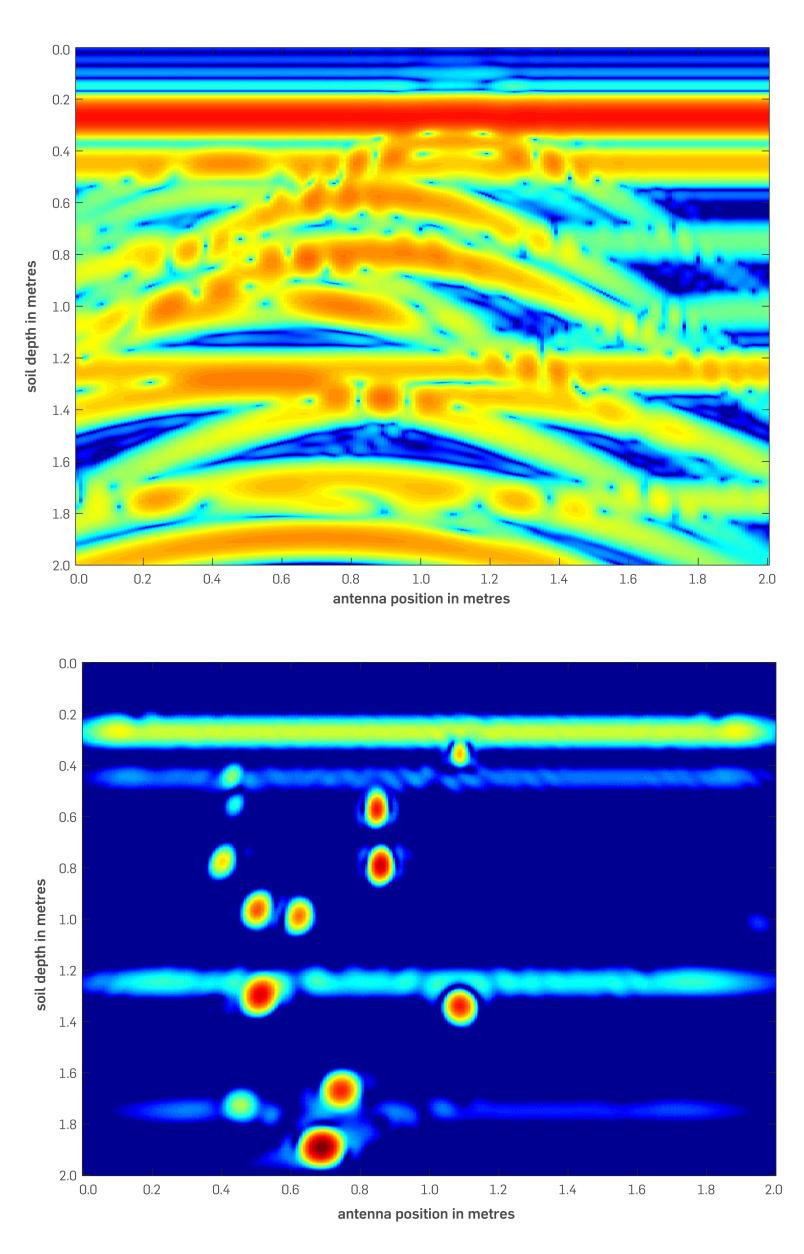
The challenge is to apply the technology in real time. Barowski: “The person holding the radar device should see an image instantly.” That means it shouldn’t be necessary to first painstakingly edit data at a computer. The researchers intend to solve the problem with a field programmable gate array, a piece of hardware that they can adapt to a specific function.
In the first step, the engineers use signal processing to remove interferences caused by layers of earth from the images, focus on point objects, and compare the properties of their signals with known radar cross sections of different mine types or other objects. This is how they intend to distinguish relevant objects from irrelevant ones in the ground. Finally, they have to include the information supplied by the positioning system.
The German research team had transported the antennae and one radar detector for initial tests to Colombia in October 2015. In order to prevent damage to the antennae during transport, the researchers from Bochum sent the disassembled components to South America. Together with Colombian students, they reassembled them back to an antenna at their destination.
Initial tests already run in Columbia
“Our aim is to share the expertise with our Colombian partners in the course of the project,” points out Christoph Baer. “This is why we have been performing all steps in close collaboration with the students on location.”
The RUB researchers have likewise acquired new insight on their journey to South America – especially during the visit to the training grounds where mine clearance exercises are conducted by the military. Baer: “Afterwards, we were certain that even though we might be able to build a mine detection device, it is out of the question that we would go minesweeping on location.”

Our project will not produce any patents.
Christoph Baer
The Medici team is now hoping to receive a follow-up grant in order to continue the project until a functional prototype is developed. A representative of the German embassy in Colombia and the Colombian government have declared to write a letter, in order to make third parties understand how important the project is for the country.
“All mines must be found, because it is a matter of humanitarian mine clearance,” stresses Christoph Baer. “Consequently, our project will not produce any patents.” It is bad enough that this kind of research is necessary at all. The researchers do not want to make a profit from their work. “Helping people is what matters to us.”
